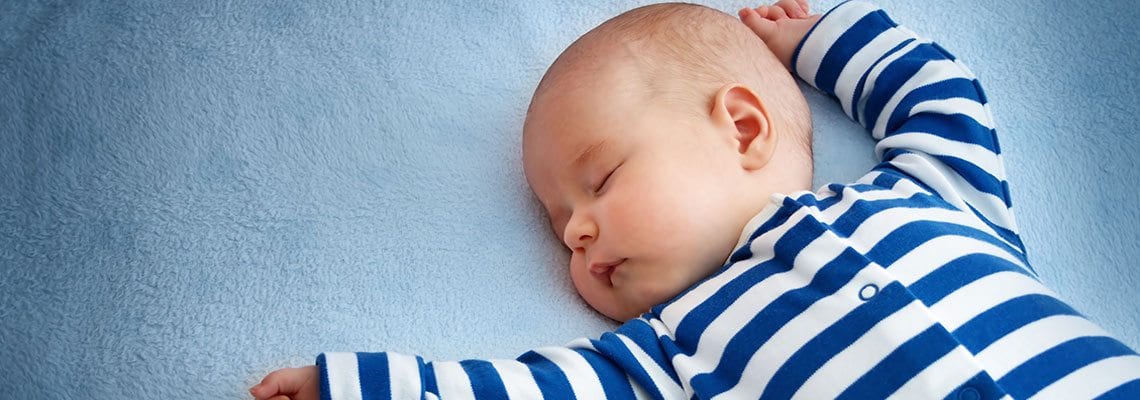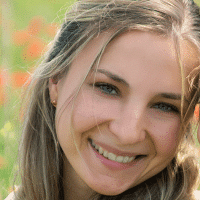
Guest author: Jenny Silverstone
When it comes to a new born baby, parents are often overly cautious about every aspect of their child’s safety and wellbeing, and their sleeping habits and positions are no exception.
When I was a new mom, I hated to even leave the room when my child was sleeping. Although I knew the chance of SIDS happening was slight, it’s still a parent’s worst fear.
You may already be familiar with the risk factors that may increase your child’s risk of SIDS or SUIDS, but do you know what safety tips to follow so you can be proactive about making your child’s slumber as safe as possible?
There’s nothing you can do to completely safeguard your child’s health. That’s a painful truth to realize as parents. We want to protect them from everything, but we simply can’t. The best we can do is learn all about the hazards they face and try to mitigate them as much as possible. Education really is our best bet. But, luckily, there are some measures we can take to increase the odds they won’t end up succumbing to SIDS or other sleep-related hazards. Here are some steps to ensure your baby is experiencing the safest possible sleep.
1. Put Your Baby on Their Backs When They Sleep, Even at Naptime
Since the American Academy of Pediatrics began recommending babies sleep on their backs instead of their stomachs in 1992, the incidents of SIDS have decreased by over half. Sleeping on their backs makes a baby less likely to get overheated and gives them a greater amount of fresh air to breathe.
Side sleeping should be discouraged until your child is old enough to roll over on their own. At that point, always start your child off on their back, but if they roll to their side, you don’t have to move them back into the back position.
Remember:
Sleeping on the stomach should be avoided. Tummy time is important, but only during your baby’s waking hours while you’re supervising. As the AAP teaches, “Remember…Back to Sleep, Tummy to Play!”
2. Don’t Cover Your Baby’s Face or Head While Sleeping
It’s essential your baby have fresh air circulating while they’re sleeping. If they have a blanket covering their face, they’ll have less access to the fresh air they’ll need. That’s a dangerous situation for a baby, particularly one that may still be a little stuffy from a recent illness.
3. Put Your Baby in a Correct Sleeping Location
 Babies often fall asleep in the strangest places — that’s because they tend to sleep a large part of their day. Here are some of their favorite spots to snooze.
Babies often fall asleep in the strangest places — that’s because they tend to sleep a large part of their day. Here are some of their favorite spots to snooze.
YES: Cribs:
A crib is the safest spot for a baby to sleep. Use a firm mattress and don’t worry about how hard it seems to you — babies have no problem with it.
YES: Bassinet:
Bassinets are fine for infants, but they shouldn’t be used for older babies. Only use them until your baby starts to roll or move around more. That is somewhere around the age of 4 months.
YES: Co-sleeper:
Co-sleepers are a relatively new piece of baby gear, but they seem to be just fine, provided they are used correctly.
NO: Baby swing:
Babies do sometimes fall asleep in their baby swings and moms are often reluctant to move them for fear of waking them and destroying their few minutes of peace and quiet. Doctors do recommend moving babies from the swing to their crib if they fall asleep there.
NO: Hammock:
Hammocks aren’t recommended for babies to sleep in because they could roll into an unsafe position. If you’re supervising your baby during a day nap, a hammock is fine to use, but it should never be used for unsupervised sleep.
NO: Couch:
Couches are never a safe option for your baby. They can roll over and fall off, and they can sink in some if the couch is too fluffy. That can cause a breathing issue.
4. Share a Room
The American Academy of Pediatrics now recommends room sharing until a baby reaches a minimum of 6 months old. But doing it until a baby turns 1 year old is even better, they say.
But a baby should have their own place to sleep, like a crib, or a co-sleeper that attaches to your bed, or a bassinet. Putting a baby in your bed is a huge suffocation risk.
5. Avoid Bed Sharing
 Putting your baby in your bed may feel good to you. You’ll get their snuggles all night long an be able to keep a close eye on them. But the suffocation risk is too great in your bed.
Putting your baby in your bed may feel good to you. You’ll get their snuggles all night long an be able to keep a close eye on them. But the suffocation risk is too great in your bed.
Your blankets could cover your baby’s face, your pillows could cut off their air supply, and you could roll over on them accidentally in the night.
6. Use Safe Sleeping Gear
When selecting a crib or bassinet, it’s important err on the side of safety. Think long and hard before you buy a secondhand crib or bassinet, especially if it’s considerably old. We know a lot more today about sleep safety than they did generations ago when they made some of those items.
Any crib should have rails and it should not have a folding or drop-down side. When buying a new crib, make sure it meets any safety standards and certifications. A quick internet search will tell you all you need to know about the safety reputation of the product you’re looking at.
When you decide where to put the crib, either in your room or your baby’s nursery, keep it away from heaters, windows, and dangling cords.
7. Use a Firm Mattress with a Fitted Sheet
The mattress you’ll use for your baby must be firm because that’s the safest option. It should fit snugly into the crib leaving little space between the sides of the mattress and the rails of the crib.
The only piece of bedding you need is a fitted sheet. It must fit tightly onto the mattress.
One of the most common mistakes parents make when setting up their child’s crib is by using bumpers. Bumpers are not only unnecessary, but they pose a suffocation risk for your child as well.
8. Leave Those Toys Out of the Crib
Keep the stuffed animals out of your baby’s crib. They may look cute, but safety is more important any day than the cute factor. At their age, those stuffed animals serve absolutely no purpose in their cribs.
9. Dress Your Baby Properly While Sleeping
Don’t keep your baby’s room too warm – they shouldn’t get overheated. Their room should be cool enough that you don’t feel hot when you go in there. A temperature of 68 degrees is good for sleeping.
10. Stop Swaddling By 2 Months
 Some moms still love to swaddle their babies. Swaddling is when you wrap your baby tightly up in a blanket.
Some moms still love to swaddle their babies. Swaddling is when you wrap your baby tightly up in a blanket.
But if you do opt to swaddle your baby, you should stop by the time they are 2 months. You don’t want them rolling over and compromising their airways because they’re too tightly wrapped.
11. Sleep Sacks — Like Infant Sleeping Bags
Go with a sleep sack over a blanket. Swaddling with a blanket is a popular method of keeping a baby warm at night. But it’s better to use a wearable blanket like a one-piece sleeper or a sleep sack.
12. Consider Using a Pacifier
Pacifiers cut down on the risk of SIDS. But don’t attach the pacifier to your baby’s clothes while it is sleeping.
And if the pacifier falls out of your baby’s mouth while they are sleeping, there’s no need to put it back in.
13. Avoid Special Products That Promise to Cut Back on SIDS
Items like sleep positioners are unneeded and potentially dangerous. Wedges placed around your baby to help them maintain a certain position during sleep is never a good idea. Cardiorespiratory monitors are another product touted to reduce SIDS in babies, but evidence shows they don’t work.
14. Twins Need Enough Sleeping Space
It can be cute to watch your twins all cuddled up together while they’re sleeping. But babies still need their own space to cut down on suffocation risks.
15. Make Sure Caregivers Are Onboard
If your baby is going to a daycare, homecare or staying with a relative when you go back to work, or if it’s just an occasional babysitting day, you should review the ground rules with the caregiver. That can be especially important if the caregiver isn’t a mom or if she’s an older mom, like a grandma.
Since the safe sleeping rules were changed 25 years ago, if this is a woman’s first grandchild she might not know that babies are supposed to sleep on their backs now instead of their tummies.
And caregivers who aren’t moms and might just be filling in for a regular caregiver may not have any idea that it even matters which position a baby sleeps in. You can’t count on anyone to know how to best take care of your baby if you don’t give them instructions on how to do it.
Pro Tip:
If the babysitting is occurring away from your home, you should ask to check out where your baby will be sleeping. Stress the importance of back sleeping, not having pillows, stuffed animals, or any other suffocation hazards near your baby.
To educate caregivers, give them printable resources or direct them to our infographic.
The traditional separation between a child’s room and a parent’s room has been evolving in recent years. As a parent, you need to look at your lifestyle, anxiety levels, and decide for yourself what will work best for you and your baby.
While room-sharing of some sort is an option, you can also have a perfectly safe baby if they have their own nursery.
Read over your options and do what feels right for your particular situation. And, as a parent, you should never feel the need to justify your decisions to anyone.
Did worries about SUIDS influence your sleeping arrangements with your baby? Please share this article with any soon-to-be mom in your life.

Jenny Silverstone is the mother of two and has been deeply passionate about writing for just about as long as she can remember. Jenny is currently the main author at Mom Loves Best where she shares in depth guides and resources to help new parents better protect, care for, and enjoy their bundles of joy. When not tapping away furiously on her laptop keyboard, she enjoys camping and spending time outdoors with her family.


